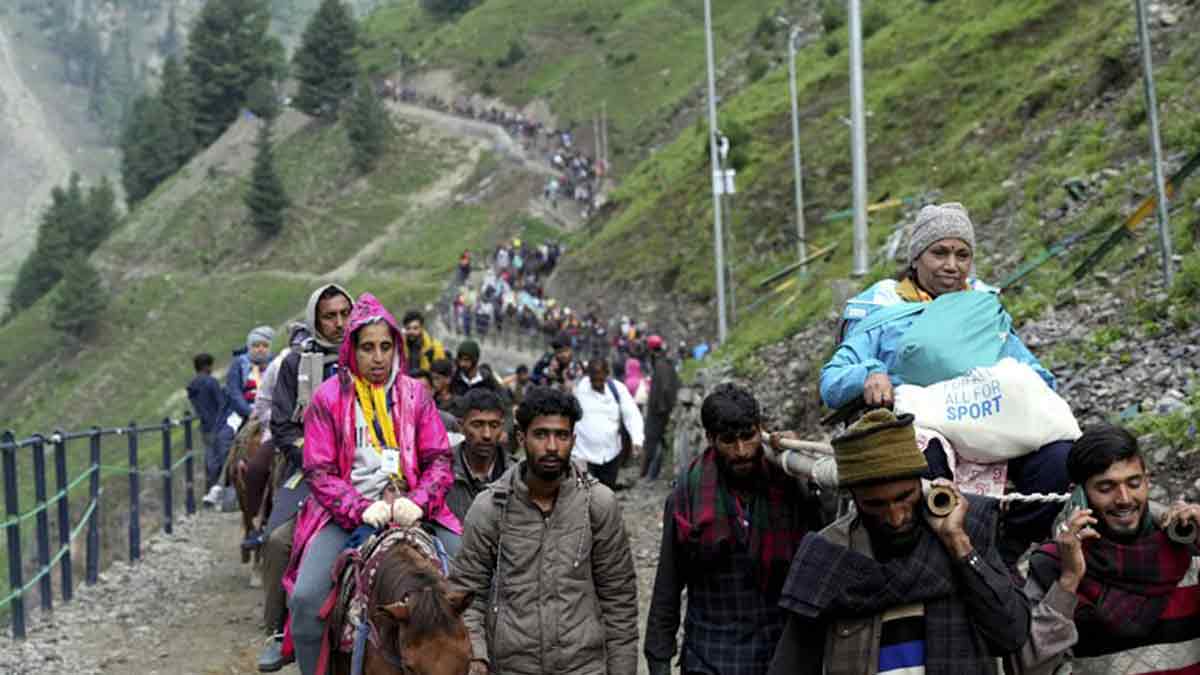Amarnath Yatra routes declared ‘no-fly zones’; drones, UAVs banned
 Pilgrims trek through mountains to reach the Amarnath cave shrine | PTI
Pilgrims trek through mountains to reach the Amarnath cave shrine | PTI
The Jammu and Kashmir government has declared the entire Amarnath Yatra routes ‘no-fly zones’ to make the pilgrimage safer.
The J&K Home Department has prohibited flying of drones, UAVs (unmanned aerial vehicles), and balloons on both the Pahalgam and Baltal routes.
These restrictions will be in place from July 1 to August 10, as advised by the Union Ministry of Home Affairs (MHA).
However, emergency services such as medical evacuations, disaster response and security surveillance will be allowed.
A detailed guideline (Standard Operating Procedure) for these exceptions will be issued soon.
The announcement comes as Union Home Secretary Govind Mohan holds a key security meeting in Jammu and Kashmir to review preparations for the Yatra.
This year’s Amarnath Yatra will start on July 3 and end on August 9. After the recent attack in Pahalgam, extra safety steps are being taken to protect the pilgrims.
To ensure smooth and secure movement, around 580 companies of the Central Armed Police Forces (CAPF) will be deployed along the route.
Security has been heightened this year because of the April 22 Pahalgam terror attack that left 26 people dead, mostly tourists.
India retaliated to the Pahalgam attack by targeting multiple terror targets in Pakistan and Pakistan-occupied Kashmir under Operation Sindoor. The strikes led to the outbreak of hostilities between India and Pakistan. After four days, the two countries agreed to a ceasefire.
This year, more than 3.5 lakh yatris have already registered for the annual pilgrimage since April 14. The total number of yatris is expected to reach 5 lakh. The response to the yatra highlights that the Pahalgam terror attack has failed to deter the pilgrims.
The good response to this year’s yatra has raised hopes of tourist arrivals in Kashmir, which have hugely declined after the Pahalgam terror attack and Operation Sindoor.
India